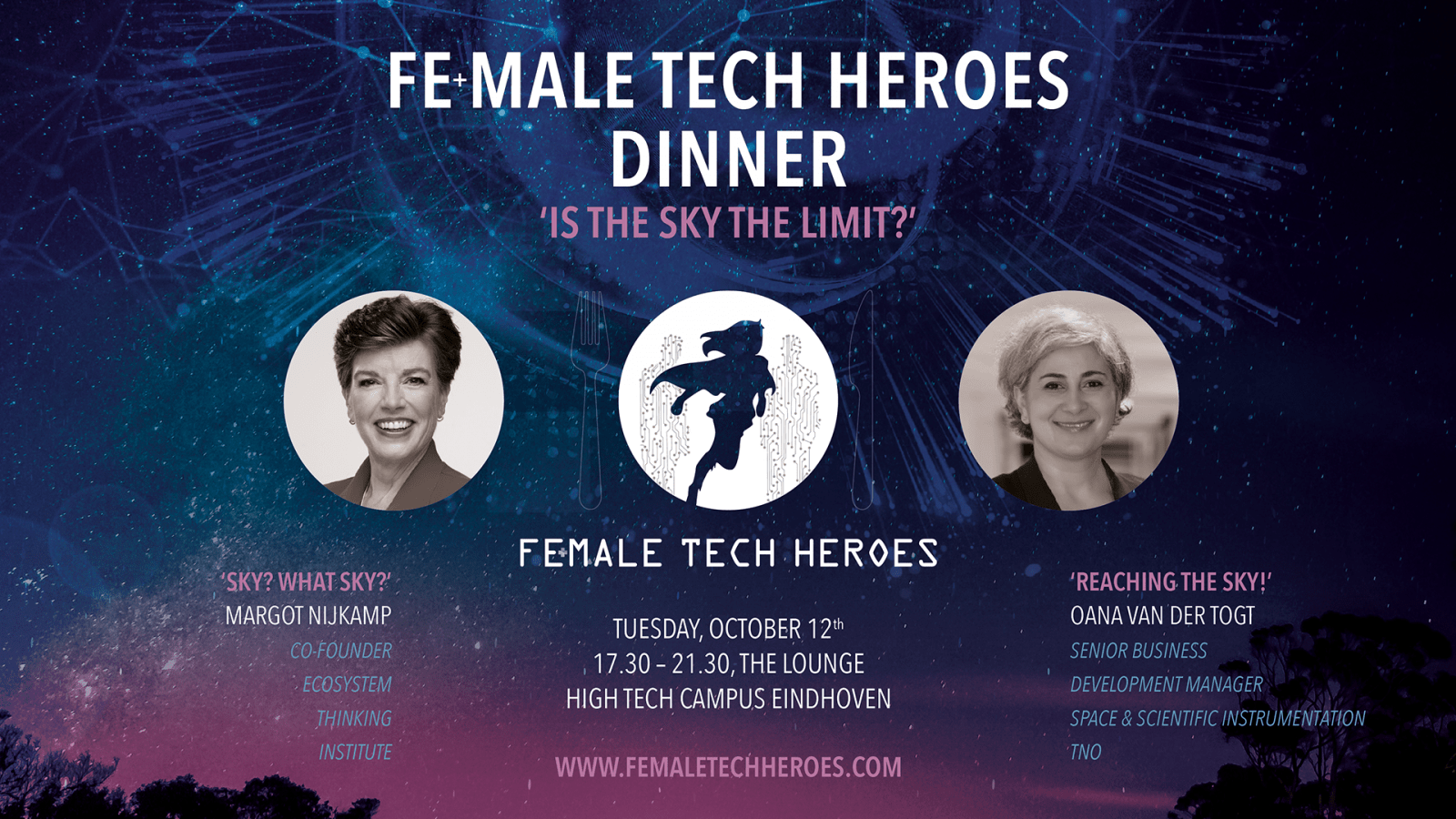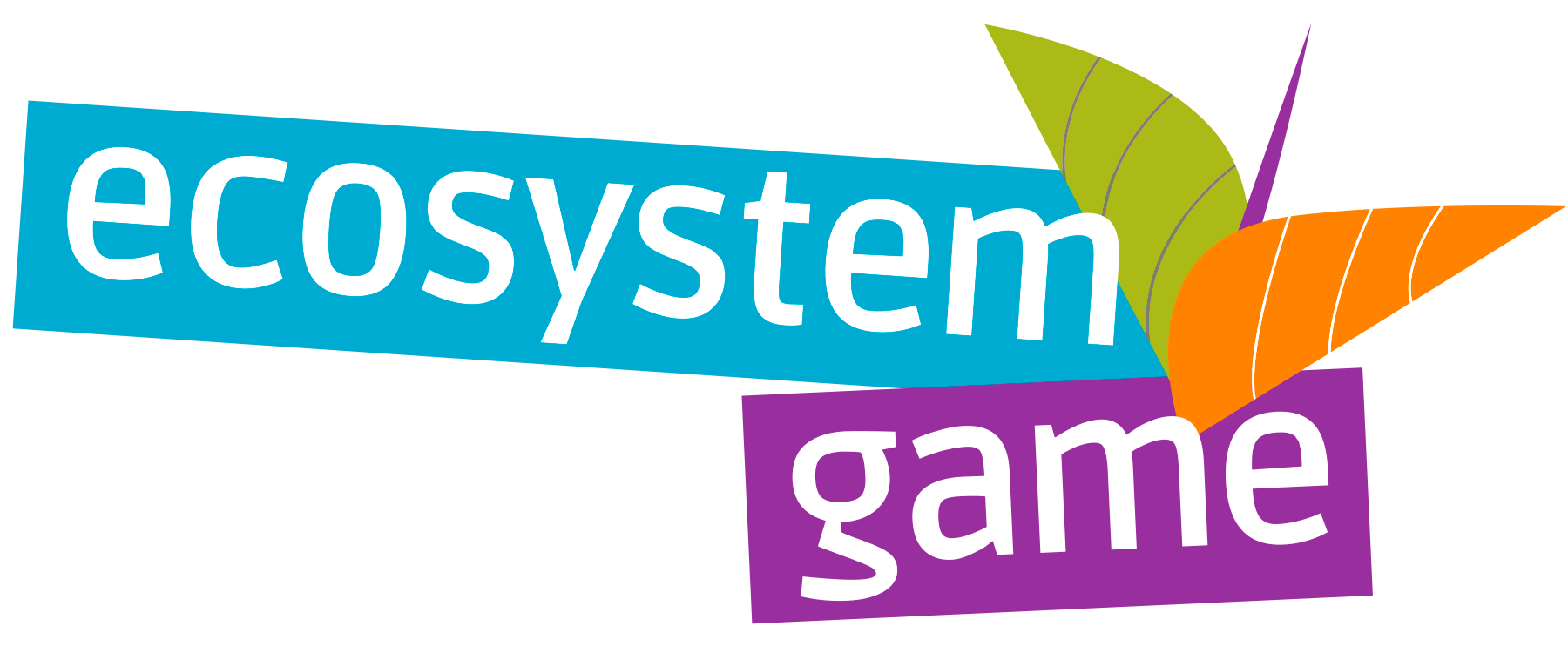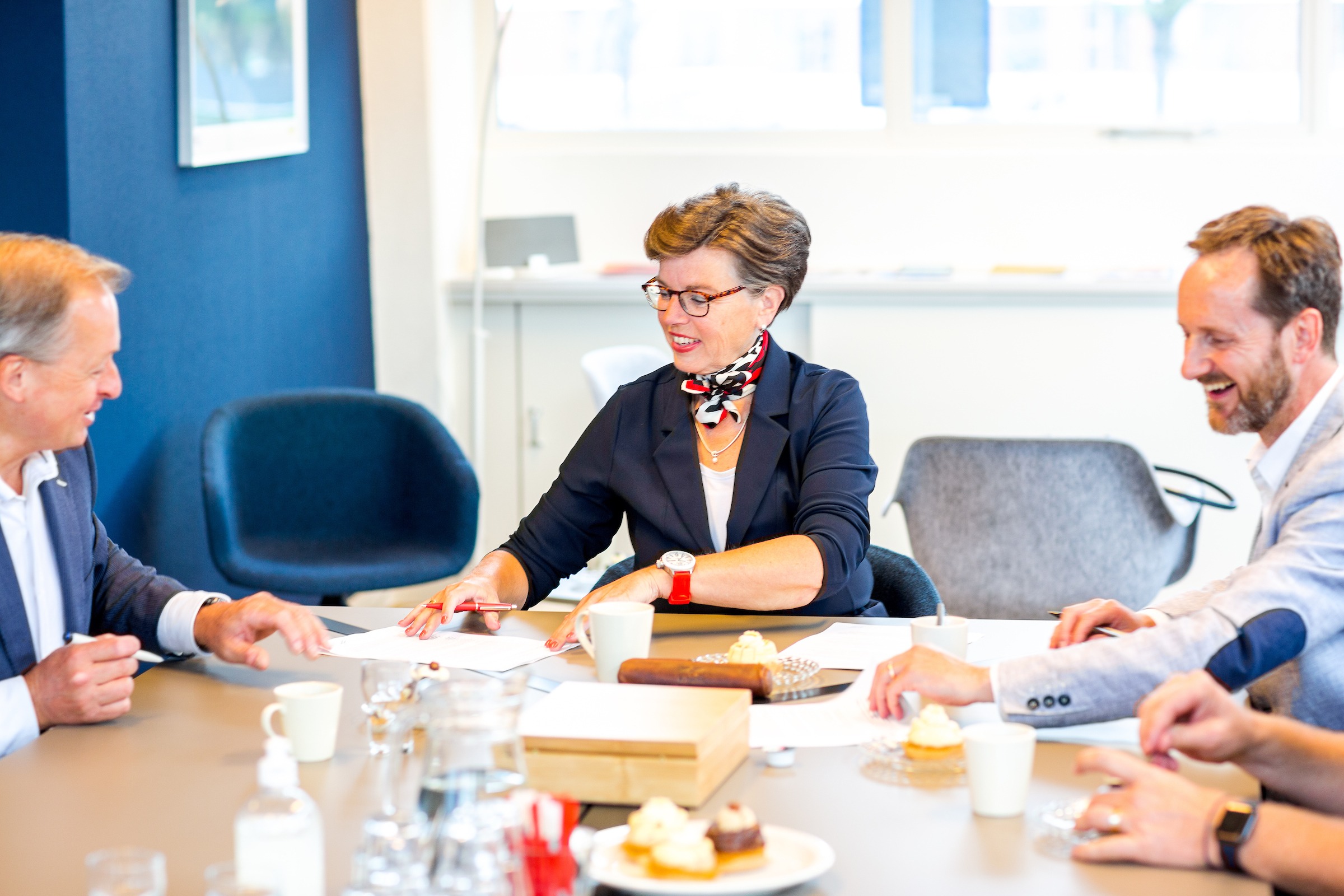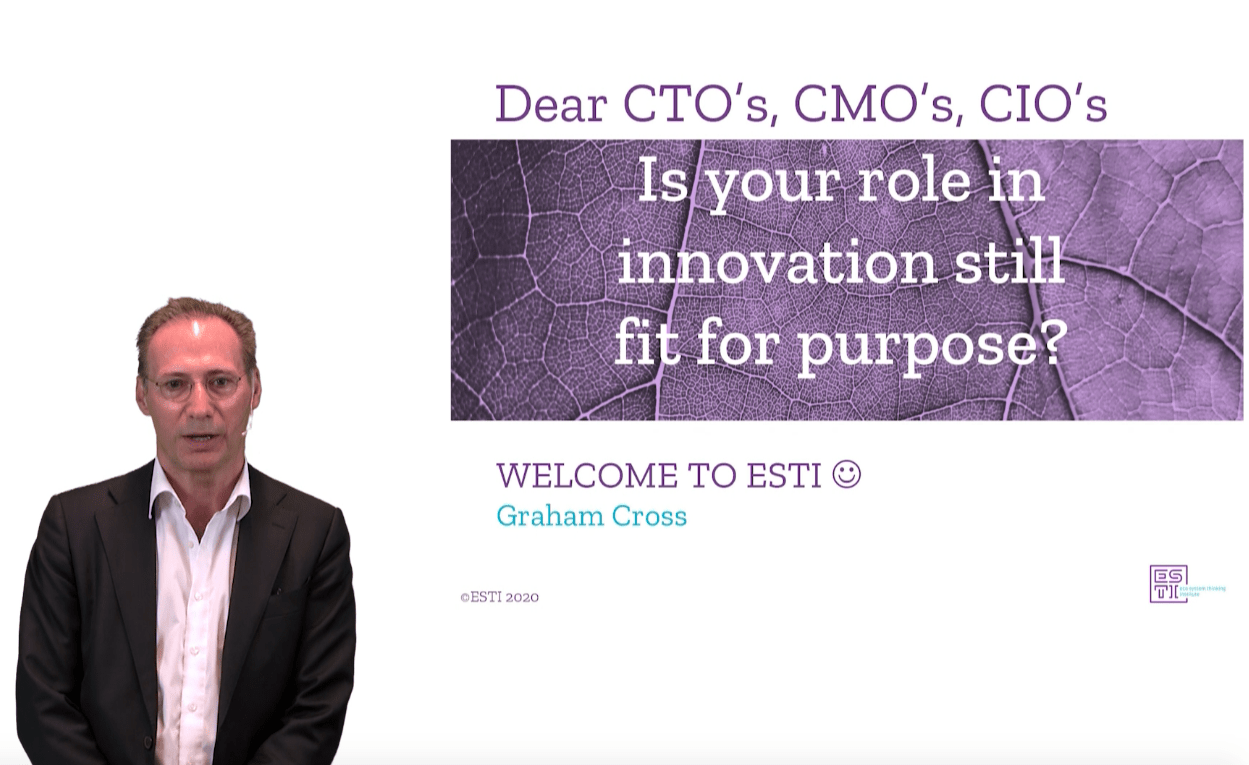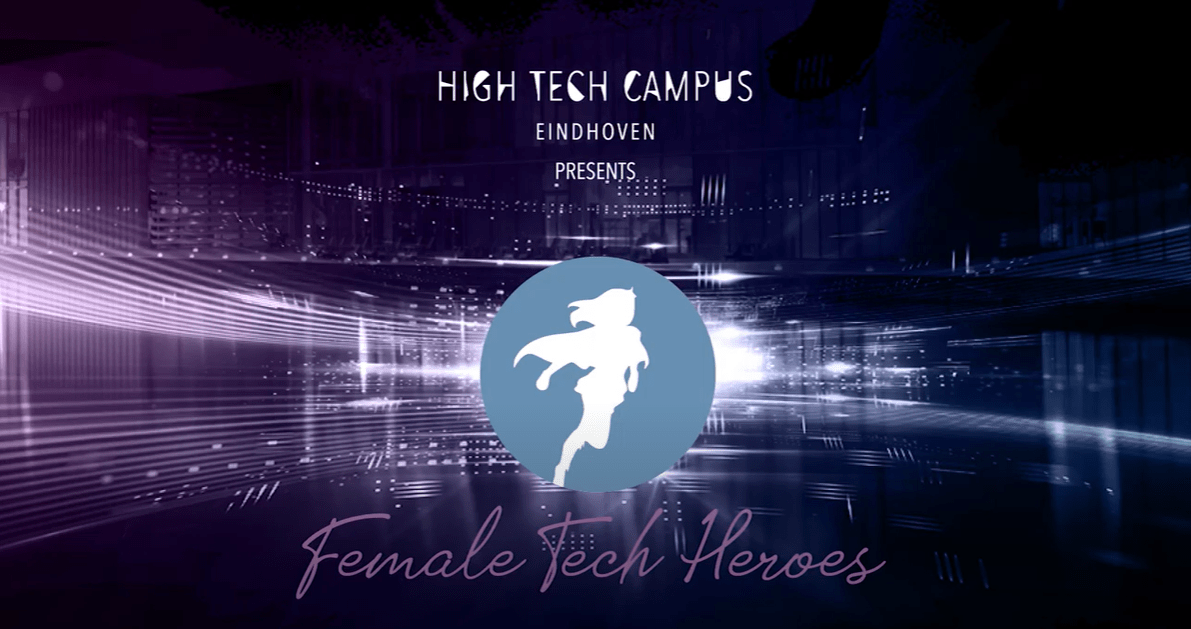More the 200 women and men already joined the Fe+male Tech Heroes movement by High Tech Campus Eindhoven to create more diversity in the tech world. Fe+male Tech Heroes is a platform and network that brings people together, creates awareness in the media and exerts a positive influence on, for example, the diversity policy of companies.
On October 12th the community came together for the Fe+male Tech Heroes Dinner Event. The theme of the evening is: The sky is the limit?
The evening’s speakers have also geared their stories towards the theme. They are Oana van der Togt, Senior Business Developer Manager at the Dutch TNO research organization and member of the Council for Diversity and Inclusion at TNO, and Margot Nijkamp-Diesfeldt our co-founder of ESTI. Both women let the audience know that the sky is definitely not the limit.

Margot Nijkamp-Diesfeldt arrived at the High Tech Campus Eindhoven in 2005 without a technical background. Her husband thought she was perfect for the position of HR and Operations Director at the newly established Holst Centre. The vacancy was briefly shoved under her nose every morning. Nijkamp was determined to finish her MBA studies before she switched jobs. Nonetheless, she decided to send in her CV. Less than five hours later she received a reply: Her profile was a perfect fit. She went for an interview, became enthusiastic and made it through to the assessments. They were tough and she doubted whether the scientific world would suit her, “but I followed my intuition. She got the job and, later as director of SME relations, would remain there until the end of 2011.
EcoSystem Game
During this time, she overcame two life-changing crises. “I had a ‘terminal phobia’ of public speaking,” Nijkamp confesses. “I really can’t explain to you how extreme that was.” Her boss at Holst Centre, Jo De Boeck, said: “But Margot, it’s precisely that that’s not going to help you in your career.” She did some very unique things there, De Boeck told her. He was not the one to talk about that, instead, she was. She reluctantly went in front of an audience, but on two occasions froze so badly that she was not even able to drink water. She had not slept a wink the previous nights either.
A breakthrough came when she met Carolien De Kreij-Goudriaan, who was at Kirkman Company at the time. Nijkamp was invited to speak and came up with a way to interact with her audience. She designed a game. “My passion is writing. I outlined some roles and tasks and had people play the game first. Then I explained what they had done.” Her game caught on, people got excited and of the 40, 20 of them asked her to come do the same thing at their organization as well. It was the start of what is now the EcoSystem Game.
“I had written those roles in a really fun way. With a good dose of humor. That allowed people to really experience what it is like to work on innovation at the Holst Centre. At the same time, I had been able to interact with a lot of people. That worked. Now you can put me in front of a room of 100 people and I’ll read that room in 3 minutes.”

Two big dreams
During Fe+male Tech Heroes, Nijkamp also manages to captivate her audience with her own personal story. There’s an even more pronounced hush in the room as she talks about her second crisis to the audience. It was one she had not seen coming, she states. At the end of 2010, she was told she could expect to live only another four to six months. ” That’s a real crisis,” she recalls. That crisis led her to think about what she still wanted to do. She had two big dreams back then. “I wanted to create a start-up with zero euros and become a published author. So I started writing like crazy on my first novel.”
Under the pseudonym Emma Flogard – a Scandinavian surname that refers to keeping a watchful eye on your flow – All I’ve Got was published. Through the Holst Centre, she set up the Red BlueJay Foundation as a spin-off. What she had learned up to that point was that people are more than what they put on their CVs. In her work with the Holst Centre and others, she developed a work climate with room for the people factor, one with strong feminine cultural overtones, as Nijkamp puts it. “If that creates common ground, it creates the space to work together on innovation.” It forms the basis of the game that she developed and continued on with within Red BlueJay.
“People told me I was crazy for wanting to start a business for myself while undergoing all those grueling treatments. But for me, there was no other time to do that, it was really now or never.” In the end, the diagnosis turned out to be partly wrong and Nijkamp still has her feet firmly on the ground. She wrote another poetry (Stripe code of lashes) and her book Samenscholing Geboden appeared under her own name. “It was published even before corona turned up,” Nijkamp is quick to add.
From day to day
Her foundation also continued to evolve into ESTI, EcoSystem Thinking Institute, where she works with her business partner Rick Wielens and team for clients such as the Dutch Ministry of Defence, Unilever, the Province of Gelderland and the University of Amsterdam. Things are going well for her. Even though she is in pain 24 hours a day, no one notices it about her. She is hypermobile and has Hemochromatosis, an iron overload disease. “Physically, I can’t do much. That makes me mentally inexhaustible.”
“If you had told me 35 years ago, when I was working as a secretary at Stork, that I would now be the director of a foundation and writing books, I would have laughed at you outright. I don’t have a dream of where it will all eventually lead, I live from day to day. However, each time I make a decision with my team as to whether what we do at ESTI has any social impact. Every cent we earn goes back into the foundation.”

Thank you Corine Spaans for this great recap of the Fe+male Tech Heroes Dinner Event. You can read the complete story at Innovation Origins.
